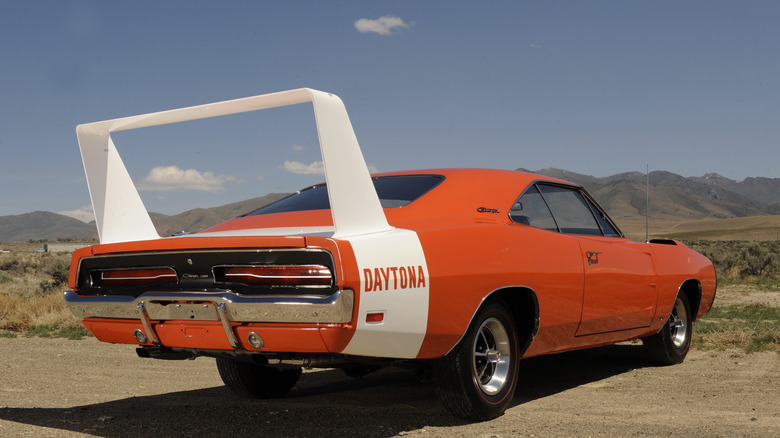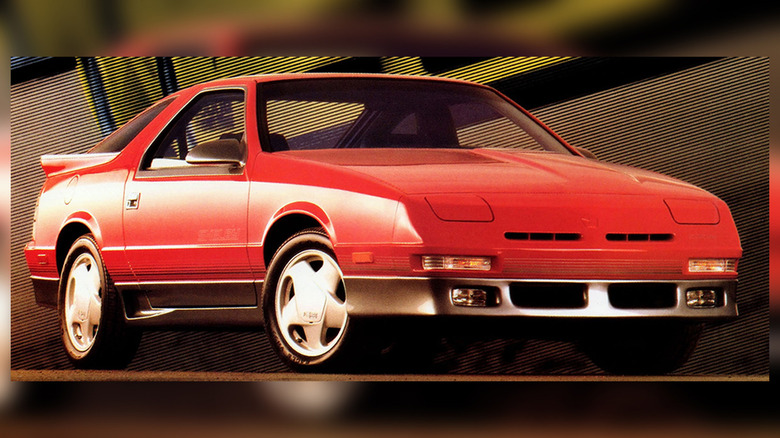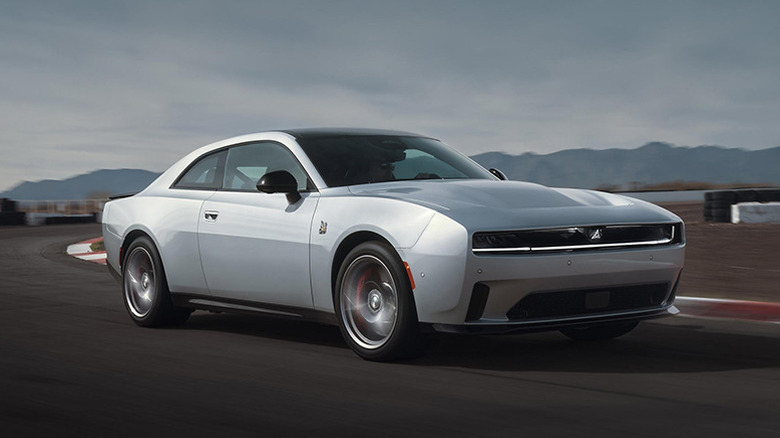
Dodge is really, really good at naming things. One of the best to ever do it, in fact. For the century and change that Dodge has been around, vehicles with names like Ram, Challenger, Charger, Magnum, Dart, Demon, and Viper have graced this country's streets and tracks. It's not just car and truck models, either. Dodge has coined memorable names for everything from trim levels (Hellcat, R/T, Scat Pack, Dude, L'il Red Express, Warlock) to engines (HEMI, Max Wedge) and shows no sign of stopping.
One of Dodge's most storied names, used as both a trim level and a standalone model name, is Daytona. Derived from the legendary Daytona 500 race at Daytona Beach, FL, the name has been used on various Dodges since the late '60s. Some of these cars are iconic, some pedestrian, and some utterly forgettable. They include NASCAR barn burners, homologation muscle cars, anemic Malaise-era land barges, K-car-based pocket rockets, modern, hi-po street cars, and even high tech EVs.
In this article we're going to trace the history of Dodge's Daytona nameplate by looking at where it came from, how it's been used, and what cars have worn it.
 Heritage Images/Getty Images
Heritage Images/Getty Images
The first Dodge Daytona, the Charger Daytona, was a homologation special of Dodge's 1969 NASCAR racer. Essentially a Charger R/T, just over 500 of these cars were built. The '69 Charger Daytona was powered by the R/T's 440 Magnum V8, but around 70 were optioned with the 426 Hemi V8. The car's most iconic feature was the eye-catching aero designed by Chrysler missile division engineer John Pointer. The aero — wind-cutting nose-cone-shaped fenders and a massive, rear-mounted wing — allowed the stock car to break the 200 mph barrier and made for an awkward yet striking high-performance street car.
After the first Charger Daytona, the name disappeared from Dodge showrooms until the mid-'70s. In 1975, Dodge produced a Daytona package for that model year's Charger. Far from the rip snorting, NASCAR-bred Daytona of years past, the '75-'77 Charger Daytona was primarily a paint-and-decal cosmetic package. While it came with either a 318 or a big block 400, neither of these wheezing mills could be called high performance.
After a hiatus of almost 30 years, the Charger Daytona came roaring back in the mid-aughts with a limited production version of the all-new Charger based on Chrysler's new LX platform. From 2006-2009, Dodge built just under 14,000 Charger Daytonas. These cars were powered by the 5.7L Hemi, were painted in old school Chrysler High-Impact colors, and featured a raft of bespoke features like blacked out grilles, custom wheels, and strobe stripes. Two more limited runs of Charger Daytonas were launched over the next two decades, one in 2013 and one that ran 2015-2023.
It's not exactly hyperbole to say that the K-car saved Chrysler from oblivion back in the '80s. Introduced for the 1981 model year, the K-car platform underpinned everything from anonymous sedans and station wagons to turbocharged performance machines and the revolutionary Caravan/Voyager/Town and Country minivan triplets. There were even K-car-based limos. The K-car platform reigned supreme on American roads, for better or worse, for 14 years. Among the dozens of variants churned out over that time was a new, compact sports car bearing an iconic name — The Daytona.
Dodge's new Daytona debuted in 1984 as a stand alone model instead of a Charger trim level. It was a two-door hatchback coupe with dashing, sharp-edged styling and came with a 2.2-liter inline four you could get in one of two flavors — naturally aspirated or turbocharged. Pretty quickly it got a bigger engine, a better turbo, and a stiffer suspension, along with a host of other upgrades. Over the next few years, the Daytona got even more upgrades and a special Carol Shelby edition was added to the mix. Snazzy pop-up headlights were added in '87, while still coming with the extremely rad T-tops.
In 1990, the Daytona got a big interior upgrade with a new wraparound, cockpit-style dashboard. I had one of these cars for nearly a decade — equipped with the middle-range I4, a five-speed gearbox, an aftermarket sunroof, and kickin' rad louvers on the rear window — and it absolutely ruled. In '92, the Daytona got a facelift once again, and it lost the pop-up lights in favor of more "modern" aerodynamic ones. Additionally, production moved from St. Louis to Sterling Heights, MI but ended nearly a year later.
So, what does the future hold for the storied Daytona name? Well, in 2025 it looks like electrification is the name of the game. The latest Charger Daytona is a sleek, powerful electric muscle car that comes in R/T and Scat Pack flavors. Both cars are powered by 400V G2500 Front/Rear electric drive motors that provide gobs of power — 496 horsepower in the R/T and a thunderous 670 horses in the Scat Pack — and come complete with all-wheel drive, cyberpunk styling, and a host of high-tech gewgaws and driving modes. Despite what some traditionalists might think about it, these new hi-po electric Charger Daytonas are a pretty great homage to the old days. Not that the hemi-powered, LX-based cars weren't, but these EVs are as well.
Speaking of hemis, rumor has it that Dodge might be shoehorning a reborn hemi V8 into the new Challenger in 2026 for those who can't or won't get onboard with electric muscle. Will these bad boys also be Charger Daytonas? Maybe Dodge will go all out and just make it a whole model by itself again like the K-car Daytonas.
















